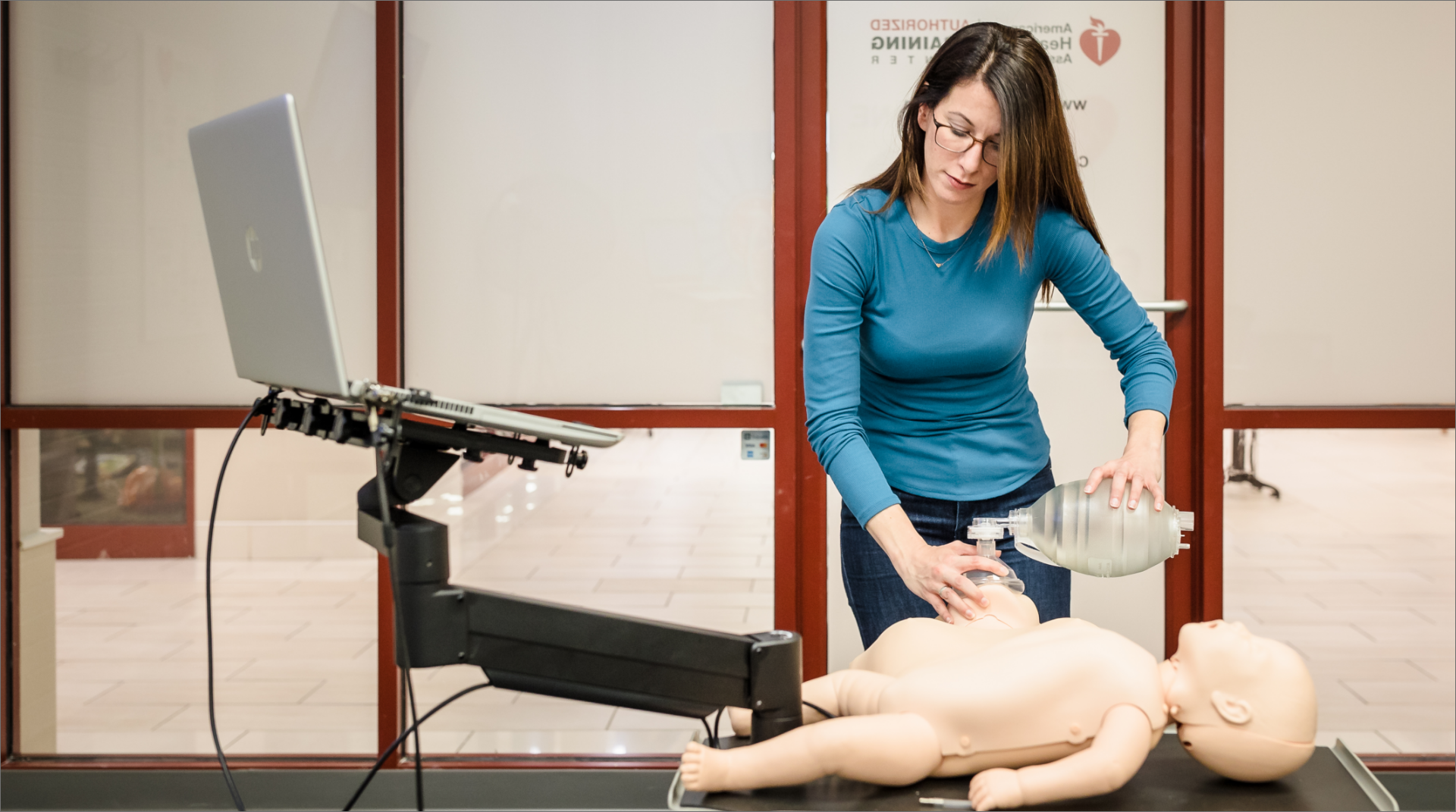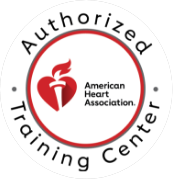

CPR Resource Center
The most comprehensive library of emergency training resources — including videos, articles, downloads, and more.


The most comprehensive library of emergency training resources — including videos, articles, downloads, and more.
The finale of our three part series discusses the use of an Automated External Defibrillator (AED) in a cardiac arrest and deployment of AED units in publicly accessible settings. Please be sure to check out Part I: Recognition of Cardiac Arrest and Getting Help and Part II: Bystander Initiated CPR.
An AED is a sophisticated, yet easy to use, piece of equipment that is able to detect lethal heart rhythms and deliver an electrical shock that is meant to fix these rhythms.
Regardless of the brand, AED units are manufactured with a key common factor – ease of use. Devices are typically limited to two to three buttons, speak loud and clear instructions, and have visual pictures on how to use them.
Studies have shown cases where children have been able to follow the simple instructions and effectively use an AED without any external help.
A normal heart has organized electrical activity that allows for synchronized contraction of the four heart chambers. When the heart is pumping normally, blood is delivered to the lungs from the Right Ventricle and to the entire rest of the body from the Left Ventricle. All cells in the body need blood to survive. Blood carries oxygen, glucose, and electrolytes to the cells and returns carbon dioxide and waste from the cells for elimination from the body.
Problems exist when the heart is unable to pump normally. Abnormal electrical activity (known as arrhythmia) can cause the heart to lose its synchronization and therefore become ineffective at pumping blood. Arrhythmia can be caused by a variety of problems including trauma, disease, electrolyte imbalance, and genetic predisposition. One of the more common causes of lethal arrhythmia is a heart attack, where blood flow becomes interrupted to a portion of the heart starving it of the oxygen and glucose it needs to function.
AEDs detect two abnormal and lethal arrhythmia – ventricular fibrillation and ventricular tachycardia. While other less-than-lethal rhythms that exist, these require additional clinical assessment and therapies that are beyond the capabilities of the AED.
Ventricular Fibrillation (VF) accounts for the vast majority of treatable lethal arrhythmia cases. In VF, the heart has sporadic and random electrical activity which causes it to quiver. A quivering heart is incapable of pumping blood so prolonged VF, left untreated, will lead to cell death throughout the body.
In Ventricular Tachycardia (VT), an abnormal electrical loop causes the lower chambers of the heart to pump rapidly. The speed of pumping can be so fast that the chambers are unable to adequately fill with blood resulting in a drop in cardiac output. When the heart is unable to pump adequate amounts of blood, cells throughout the body become starved of oxygen and glucose and will eventually die.
When the AED detects either of these rhythms, it will deliver a shock to the victim. The shock is designed to interrupt the abnormal electrical activity and give the heart’s normal electrical system an opportunity to take over. You can think of it as a hard reboot of the heart’s electrical system.
AEDs have sophisticated technology that will only treat VF and VT. If the victim has another arrhythmia, a normal heart rhythm, or no electrical activity (asystole), the AED will advise that no shock is advised and will instruct the user to start CPR.
Since the AED will only advise a shock when it is appropriate, the user should follow the instructions of the AED and deliver the shock when indicated.
Code One Training Solutions, LLC and AEDTeam.com have partnered to provide expert consulting for public and private AED access deployments, AED device management, and world-class emergency training programs.
Simply put, an AED is only effective if it can be rapidly accessed in an emergency and is always ready for use.
Many AED programs miss this mark. Under fear of theft or tamper, AED units are constantly stored in areas that are inaccessible to the general public in emergencies. Many devices are also not routinely checked to ensure that they are ready for use. The unfortunate result of poorly implemented AED programs is a delay of a potentially lifesaving therapy.
Every AED deployment requires a unique strategy. There is no strict algorithm or ratio that prescribes how many AEDs should be placed or where they should be physically located. However, we can use some guiding principles to make recommendations for a deployment.
One of these guidelines focuses on the delivery of an AED to any point on the property, inside or outside, within 3 minutes. Now this is tricky: If an emergency response requires someone to run from the victim to retrieve the AED and then return to the emergency, the AED would need to be 90 seconds from the point to allow retrieval within 3 minutes. However, if the location has a response team that can be activated (i.e. overhead page), a designated person near the AED could retrieve it and arrive to the person within three minutes.
Complications to rapid delivery exist when there are campuses with multiple stories, multiple buildings, a large footprint, obstacles such as machinery or warehouse storage, and vast outdoor areas. In these cases multiple AED units may need to be deployed or a creative response solution implemented.
Another obstacle to public AED access is ensuring that the device can be made available whenever people are on site. For instance, if a school places an AED in the nurses office which is locked after hours and on the weekends, that device becomes unavailable during after school and weekend activities. Further, if the school has athletic fields that are used for non-school functions (i.e. the local recreation league), and the AED is in a publicly accessible location within the school, it may not be accessible for events occurring on the school’s property when the building is locked.
An outdoor AED deployment can help improve 24/7 acccess. There are many factors involved when considering an outdoor AED placement – temperature control, dust and water intrusion, and tamper / theft protection. AEDTeam.com deploys an all-weather AED enclosure manufactured by CE-TEK. This enclosure features a thermostatically controlled heating element, protection from water and dust intrusion, and a marine-grade lock to protect from theft and tamper. Deployment of the CE-TEK unit requires integration with your local 911 dispatch center. During an emergency, the rescuer will need to call 911 and the dispatcher will provide them with the access code for the cabinet so that the AED may be retrieved.
Outdoor AED placement may also reduce the number of devices that are needed for effective deployment. Consider a modern shopping center that has a grocery store, gym, yoga studio, brewery, and coffee shop. Placement of multiple AED units among the individual stores is expensive and still limits access to AEDs to their business hours. On the other hand, placement of one or two AEDs in outdoor cabinets allows for shared access among all shops, access to AEDs after hours, and rapid deployment for emergencies that occur anywhere on the property.
When considering placement of an AED, high visibility is important. For effective bystander response. In a familiar setting, such as the workplace, a high visibility setting triggers muscle memory for when the AED is needed. Rescuers are able to quickly identify where the nearest AED is located and retrieve it.
In unfamiliar settings, such as an airport, where bystanders are not expected to know where an AED is located, a high visibility area helps for rapid identification of the AED and fast retrieval.
Consider using high visibility signs which can be viewed from all directions, brightly colored cases, and placement of AEDs in highly trafficked areas.
Use of an AED is a low-frequency, high-risk event. The life of the person in cardiac arrest is partly dependent on whether or not routine maintenance was performed on the lifesaving equipment being used.
While AEDs are intended to have long-lasting parts and require little maintenance, they need to be routinely checked. Consider these items when performing an AED inspection
A staff member should be assigned to complete AED inspections at least monthly on each device and record the inspection in a log which can demonstrate the above items were checked. The inspection log should be signed and dated for each entry. Any needs identified during an inspection should be immediately addressed.
A thorough and well documented AED inspection program ensures that all devices are ready for use in an emergency and provides a strong defense that the AED owner responsibly maintained the device in the very unlikely event that the device fails in an emergency.
New technologies that enhance AED deployment strategies include devices that transmit information on readiness for an emergency (this is currently limited to only one device on the market) and retrofit technologies that similarly identify whether an AED is ready for use.
Even with the most robust maintenance and inspection schedule, an AED has the potential to fail the moment the after an inspection has been completed. Unfortunately this failure is unlikely to be identified until the next inspection takes place (a week, a month, a quarter, a year, or even longer depending on the inspection schedule, if there is one!) later.
Technology that monitors AED status can be utilized to immediately identify when a unit has been removed from its enclosure – which may be the result of emergency deployment, theft, or tamper – or when the device is no longer indicating readiness for emergency use. This helps to ensure that the AED is always ready when it is needed and, similar to the inspection log, provides an audit trail showing that the AED was responsibly maintained.
There is not one topic in this series that is the key to cardiac arrest survival. All of the items discussed – immediate recognition of a cardiac arrest, immediate activation of the 911 system, immediate high-quality bystander CPR, and immediate use of an AED – work cooperatively to give a cardiac arrest victim the best possible chance of survival.
Cardiac arrest is the leading cause of death worldwide. In the United States alone, over 200,000 people experience cardiac arrest each year and only 10% survive to discharge from the hospital. While 49% of cardiac arrests reported to CARES were witnessed in 2017, only 38% received bystander initiated CPR. Use of AEDs by bystanders was only 11% in witnessed cardiac arrests in public settings for 2017.
These figures demonstrate a dire need for improvement. Through awareness, public education, and effective AED deployment strategies, we have the power to drastically improve cardiac arrest survivability in our community.
Help Me Find a Course